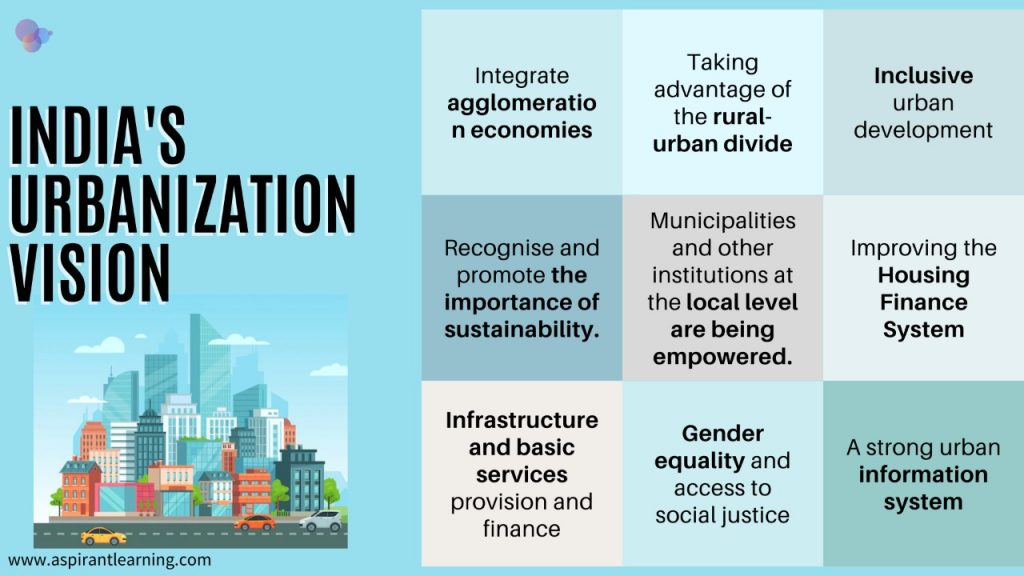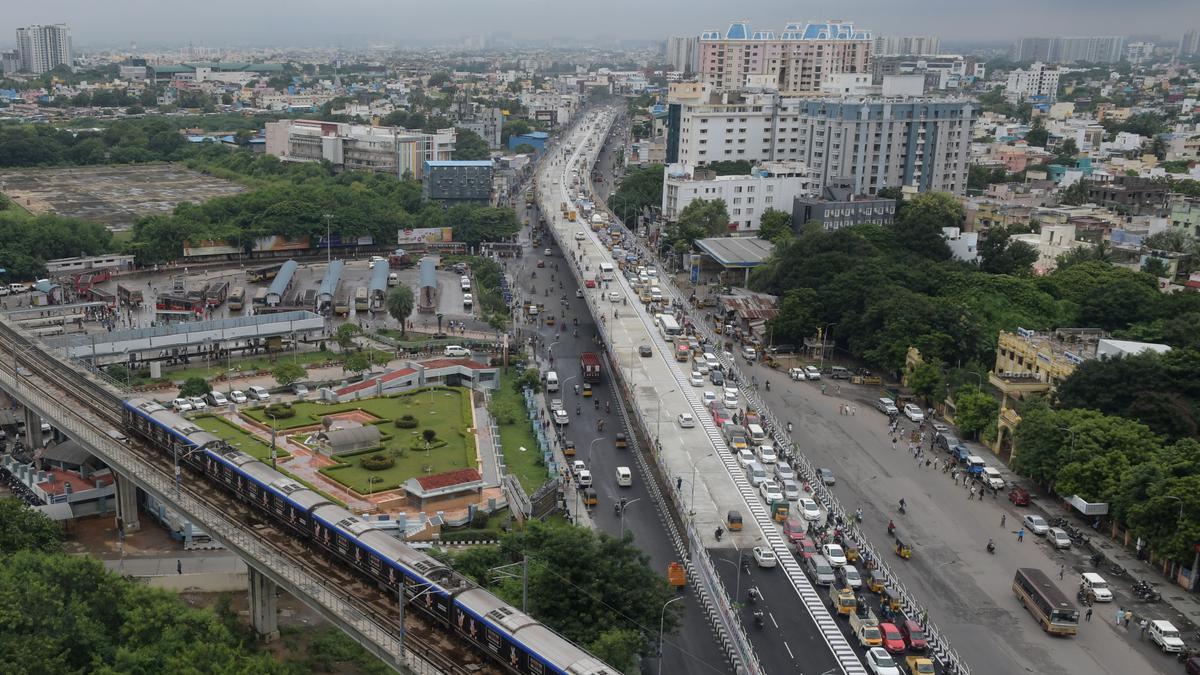News Highlight
A recent report on urban financing for India is another case of a top-down approach that is over-dependent on technocentric solutions and capital-intensive technologies.
Key Takeaway
- A World Bank report on financing India’s urban infrastructure requirements, released in November last year, focuses on private investment to address urban difficulties.
Urbanisation in India
- Overview
- Urbanization is an essential component of the economic growth process.
- As in most countries, India’s towns and cities contribute significantly to the country’s economy.
- With fewer than 1/3 of the population, India’s metropolitan areas generate more than 2/3 of the country’s GDP and account for 90% of government revenue.
- Urbanization in India has accelerated as more people travel to towns and cities searching for economic opportunities.
- Slums now make up 1/4 of all urban dwellings.
- In Mumbai, for example, slums house more than half of the population.
- Unlike in most other developing countries, many are located near employment centres in the middle of town.
What leads to urbanisation?
- Industrialisation
- Industrialization has increased job opportunities by allowing people to work in modern sectors in jobs that contribute to economic advancement.
- More people have moved from rural to urban areas since the industrial revolution due to increased work opportunities.
- Commerce
- Commercialization and commerce are linked to the assumption that towns and cities offer more economic opportunities and returns than rural areas.
- Facilities
- Living in a city or town has various social advantages.
- Better educational facilities
- Higher living standards
- Improved sanitation and housing
- Improved health care
- Improved recreation facilities
- Improved social life
- Living in a city or town has various social advantages.
- Job prospects
- Services and industries produce and expand higher-value-added jobs, resulting in more job opportunities.
Significance of Urbanization
- Some of the beneficial effects of urbanisation include:
- Job development
- Technical and infrastructure improvements
- Better transportation and communication
- Educational and medical facilities
- Higher living standards.
- Higher levels of literacy and education, better health, longer life expectancy, and more access to social services.
- Increased chances for cultural and political participation are all associated with urban living.
- Urbanisation and economic growth are inextricably linked to industrialisation, job creation, and productivity increases.
Urbanization’s disadvantages
- Unemployment
- The lack of highly skilled occupations is most prominent in metropolitan regions, particularly among educated people.
- Sewage infrastructure
- Due to fast population expansion, most metropolitan areas have insufficient sewage infrastructure.
- Overcrowding
- Overcrowding is an element that is developing daily as more people and immigrants relocate to cities and towns in pursuit of a better life.
- Dwelling crisis
- As the population of metropolitan regions expands, housing becomes increasingly scarce.
- Pollution
- As the population grows, so does the need for transportation, resulting in traffic congestion and pollution.
- Health crisis
- Communicable diseases such as typhoid, dysentery, plague, and diarrhoea can eventually spread quickly.
- Crime rates
- A lack of resources, overcrowding, increasing poverty rates, unemployment, and a loss of social services and education all contribute to social concerns like violence, drug abuse, and crime.
India’s Initiatives for Urbanisation
- Schemes/Programs Concerning Urban Development
- Smart Cities
- AMRUT Mission
- Swachh Bharat Mission-Urban
- HRIDAY
- Pradhan Mantri Awas Yojana-Urban
- Government Programs for Slum Dwellers/Urban Poor
- Pradhan Mantri Garib Kalyan Yojana
- Atmanirbhar Bharat Abhiyan (self-reliant India)

Conclusion
- Uncontrolled urbanisation in India endangers our future and the planet’s future.
- However, it is also an opportunity.
- Cities can be engines of growth, revolutionising the economy and, with it, people’s lives.
- But to make that happen requires massive effort and a radical change in approach.
Pic Courtesy: The Hindu
Content Source: The Hindu



